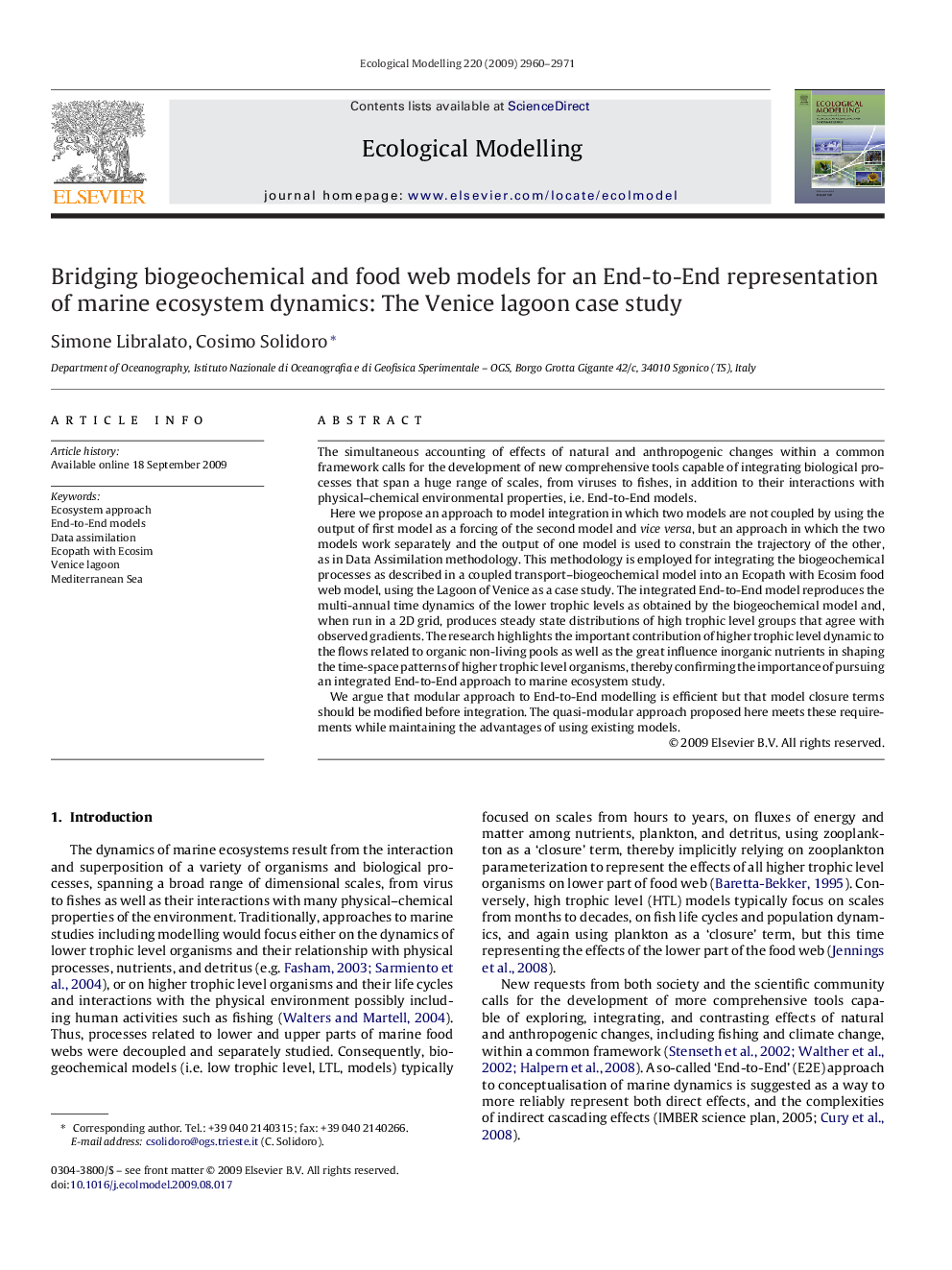| Article ID | Journal | Published Year | Pages | File Type |
|---|---|---|---|---|
| 4377637 | Ecological Modelling | 2009 | 12 Pages |
The simultaneous accounting of effects of natural and anthropogenic changes within a common framework calls for the development of new comprehensive tools capable of integrating biological processes that span a huge range of scales, from viruses to fishes, in addition to their interactions with physical–chemical environmental properties, i.e. End-to-End models.Here we propose an approach to model integration in which two models are not coupled by using the output of first model as a forcing of the second model and vice versa, but an approach in which the two models work separately and the output of one model is used to constrain the trajectory of the other, as in Data Assimilation methodology. This methodology is employed for integrating the biogeochemical processes as described in a coupled transport–biogeochemical model into an Ecopath with Ecosim food web model, using the Lagoon of Venice as a case study. The integrated End-to-End model reproduces the multi-annual time dynamics of the lower trophic levels as obtained by the biogeochemical model and, when run in a 2D grid, produces steady state distributions of high trophic level groups that agree with observed gradients. The research highlights the important contribution of higher trophic level dynamic to the flows related to organic non-living pools as well as the great influence inorganic nutrients in shaping the time-space patterns of higher trophic level organisms, thereby confirming the importance of pursuing an integrated End-to-End approach to marine ecosystem study.We argue that modular approach to End-to-End modelling is efficient but that model closure terms should be modified before integration. The quasi-modular approach proposed here meets these requirements while maintaining the advantages of using existing models.
